“The best place to hide a dead body is the second page of Google search.” – Anonymous
Search engine optimization is trending in the financial advisor community these days. With the move to online-first businesses over the past several months, the conversations we’re having with advisors are increasingly centered around search.
Before we dive into the 5 areas, here are a few stats to root us in the importance of search.
- 68% of online experiences begin with a search engine
- SEO drives 1000%+ more traffic than organic social media
- SEO leads have a 14.6% close rate
- The number 1 result in Google’s organic search results has an average CTR of 31.7%
Sources: Backlinko, BrightEdge
And the list goes on and on…
Search plays a role in every part of the buying journey, from awareness all the way through research.

But figuring out what do to when it comes to search can be tricky if you don’t have the right process and tools.
Our view is that the formula for any small-midsize advisor should be: own local, own long-tail keywords, rank well for branded searches.
We cover 5 areas you can begin to focus on tomorrow to rank better on Google.
1. Audit your website and conduct key research
The reality is that ranking for search can be extremely difficult if A) you don’t know where you stand and B) you don’t know what you’re trying to rank for. The reality is that it will be nearly impossible to rank for certain keywords (i.e. retirement income) so the first step is to audit your own properties and conduct proper research.
We tell advisors to audit their website first because it is critical to understanding where they’re strong and weak. If you’re driving a lot of traffic for a specific keyword or a specific piece of content, then you then you don’t need to focus on it. For example, we’re driving strong brand traffic for the keyword Seven Group, so we don’t need to focus on branded keywords.
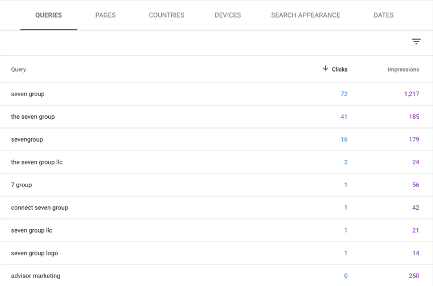
Once you understand where you’re ranking well it’s time to do your keyword research. Our example comes from the keyword “financial advisor San Diego.” As you’ll see, there’s a good number of searches per month on this term, so if you’re an advisor in San Diego, then it will make sense to build content around the local search category.
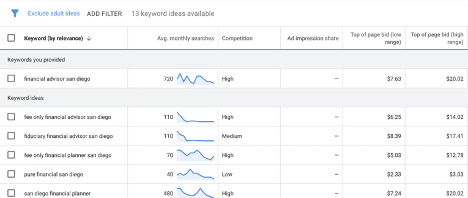
Keyword research should focus in three places – local terms, long-tail terms (more on that below), and branded terms. When it comes to long-tail the key is to figure out variable phrases that have enough search volume but don’t necessarily have all the competitiveness. Why? Higher conversions, better chance to rank.
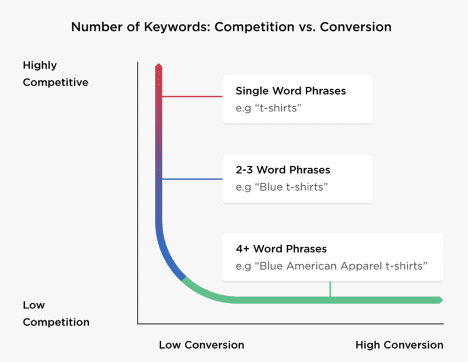
Sources: Backlinko
Once you’ve done your research it’s time to document. Make a spreadsheet of all keywords that you want to rank for and track them as appropriate as you optimize your website and create new content.
2. Get your website and page structure right
Your website structure is something that is not only critical for investors coming to your website, but it’s also critical for Google. A poorly structured website means it will be harder for the algorithm to crawl pages.
Your website structure is built on a hierarchy of navigation, sub navigation, and page structure.
Successful navigations and sub navigations allow people to find things quickly and easily. This means you need to root your navigation in the view of the investor and not use any internal language. When building your navigation:
- Don’t have more than 4-6 primary navigation items – the primary navigation can get very overwhelming very quickly if you’re not careful
- Order matters more than you think. Ensure you’re ordering things appropriately and moving from top of funnel to bottom of funnel (i.e. contact us should be last)
- Group items using your sub navigation. Not everything needs to have the most real estate, so group things into themes and buckets
- Be descriptive, avoid common terms, especially in your sub-navigation
Once you have your navigation in order, next up is page structure – yes, page structure. A good page can help a user stay or make a user leave. Whether it’s an article page, or an informational page (i.e. services), build out each page with intention and include a few things to be sure you’re flowing well for investors and Google:
- Think about page structure as 3-part flow – overview, details, conclusion
- Use H1 & H2 tags. – These are your headlines and sub headlines for your pages. H1 is the top headline, H2s are all other headlines. Be descriptive
- Supplement content with media – add videos, graphics, etc. Google loves image and media weight
- Cross link related content – For example, we have two other pieces on SEO, so we’re cross linking them here and here
- Tag all images – Google crawls images so you want to add descriptors to all of them
3. Create content that’s relevant, specific, and robust
Remember the research you did? Now it’s time to use it to build your content backlog. This is exactly as it sounds – use whatever keywords you’re trying to rank for to build a list of content topics you could write about. This means 15-25 pieces of thoughtful content across all the topics you want to cover – SEO focused, and non-SEO focused. This is just a starting point, this should be a living, breathing document that you can add to over time as you create more content.
The key to good content is rooting it contextually to your audience. Investors are not interested in content unless it specifically relates to them. You need to contextualize whatever piece you’re sharing with the audience you’re going after – through your own experience, data, or social proof.
For example – if you go after doctors:
- “Have been speaking with a lot of clients who are doctors recently and what’s been bubbling up is…” etc. etc.
- “The fact that X% of doctors are seeing this issue pop up in their tax planning is eye opening to me…” etc. etc.
This makes your piece worth reading for doctors.
Contextual content is the most underrated / important aspect of organic content development, SEO or not.
Document your topics, keep it alive.
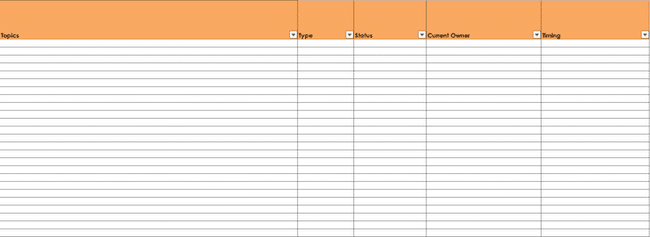
4. Optimize for devices
Google prioritizes well-structured mobile sites. When’s the last time you checked your website on mobile? You likely have some areas to fix. You can use Google’s page speed insights tool (free) to understand if you’re optimized well for the platform. If not, work with a third party or your agency to fix any issues. The questions to ask yourself? We note them below.
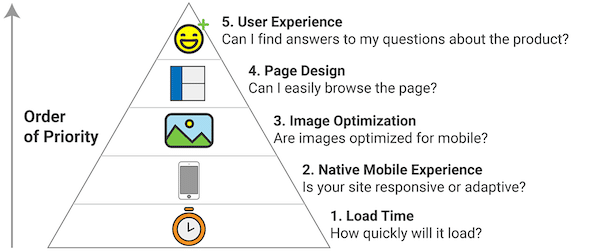
5. Own Local
And last but not least, own your local ranking. If you check search volume for financial advisor in _____________ <- your city, I can guarantee you that you’re going to have more than 100 searches for that term. Doesn’t seem like a lot, but 100 searches for a term like that is very high-quality traffic. The best way to do this is to 1) Include local information in your page and 2) Setup your Google my business page.
- Setup Google My Business Page – add as much information as possible, add 4-6 images of your office, team, or otherwise
- Leave opportunity for Google reviews – Google reviews are not the same as testimonials, people can leave them, you just can respond to them or edit any of the content on them
- Include all contact information across your site and on your Google My Business page – be descriptive, don’t leave any details to the wayside
Complexity in marketing is only something someone tries to create when they’re trying to prove their worth. What it really takes is a simple, disciplined, systematic approach to building a marketing program of value. This applies to all aspects of marketing, SEO included.
Related: The Financial Advisor Marketing Model is Broken: 4 Ways to Fix it


